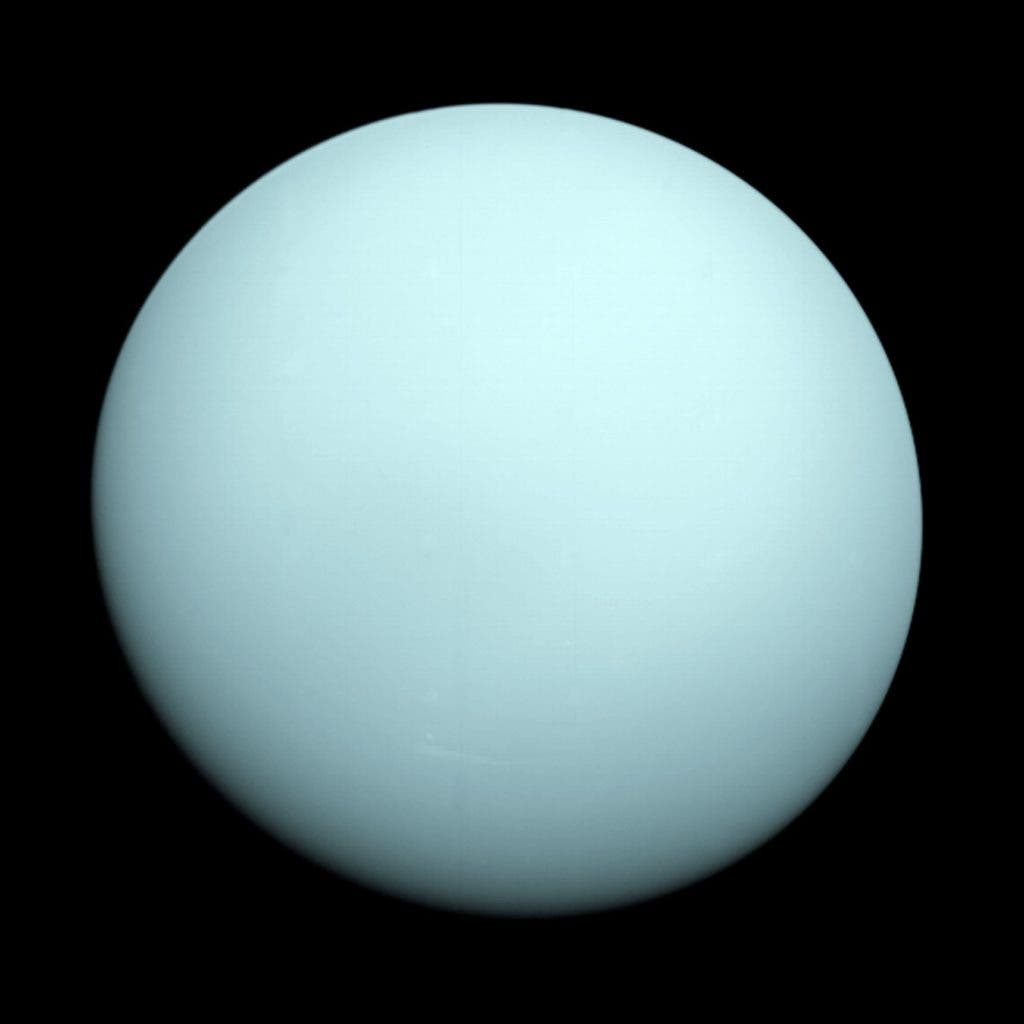I know, I know — another Uranus joke. But in all seriousness, scientists just reported in the journal Nature Astronomy that the icy planet’s atmosphere contains significant amounts of hydrogen sulfide. Apart from the poetic significance of knowing Uranus basically smells like farts, the discovery might actually help astronomers understand how our early solar system formed and evolved.

Uranus as a featureless disc, photographed by Voyager 2 in 1986. Credit: Wikimedia Commons.
For some time, scientists had presumed that the planet’s clouds contained hydrogen sulfide and ammonia. However, this was more of an inference rather than a direct observation and was hinted by the absence of certain wavelengths of light. Now, new and improved measurements obtained by using the 8-meter Gemini North telescope on Hawaii’s Mauna Kea have detected the presence of hydrogen sulfide (an unpleasant gas that most people avoid) in Uranus’s cloud tops.
The telescope’s spectrometer measured reflected sunlight from a region directly above the main visible cloud layer in Uranus’s atmosphere, according to Patrick Irwin, lead author of the new paper and researcher at the University of Oxford, UK. It’s interesting to note that Gemini’s Near-Infrared Integral Field Spectrometer (NIFS) was designed to study explosive environments around the supermassive black holes found at the center of far-away galaxies. The fact that its use has been extended to solve a longstanding mystery in our solar system is impressive, to say the least.
Uranus and Neptune both formed in the colder part of the solar nebulae that seeded the planets billions of years ago. The team directly detected hydrogen sulfide at 0.4-0.8 parts per million as ice in its cloud tops. At this concentration, an astronaut sniffing Uranus’ air would sense a rotten-egg, fart-like smell (ignoring the fact that the cold and the rest of the atmosphere’s composition would kill him). This is an observation that contrasts sharply with the inner gas giant planets Jupiter and Saturn, where no hydrogen sulfide is seen above the clouds — instead, ammonia is observed. What’s more, the spectral lines suggest that there is less ammonia in Uranus than expected, which is another clue speaking to the difference in the formation of the two sets of planets.
“During our Solar System’s formation the balance between nitrogen and sulfur (and hence ammonia and Uranus’s newly-detected hydrogen sulfide) was determined by the temperature and location of planet’s formation,” said Leigh Fletcher, a member of the research team from the University of Leicester in the UK.
According to Fletcher, this was a very challenging work because when a cloud deck forms, it locks gases away in a deep internal reservoir, hidden away beneath the levels that we can usually see with our telescopes.
“Only a tiny amount remains above the clouds as a saturated vapour,” said Fletcher. “And this is why it is so challenging to capture the signatures of ammonia and hydrogen sulfide above cloud decks of Uranus. The superior capabilities of Gemini finally gave us that lucky break,” concludes Fletcher.
Although it might smell foul, Uranus has many valuable lessons to teach scientists about the early history of the solar systems and the conditions required for icy worlds to form around stars light-years away from our sun.
Scientific reference: Patrick G. J. Irwin et al, Detection of hydrogen sulfide above the clouds in Uranus’s atmosphere, Nature Astronomy (2018). DOI: 10.1038/s41550-018-0432-1.









